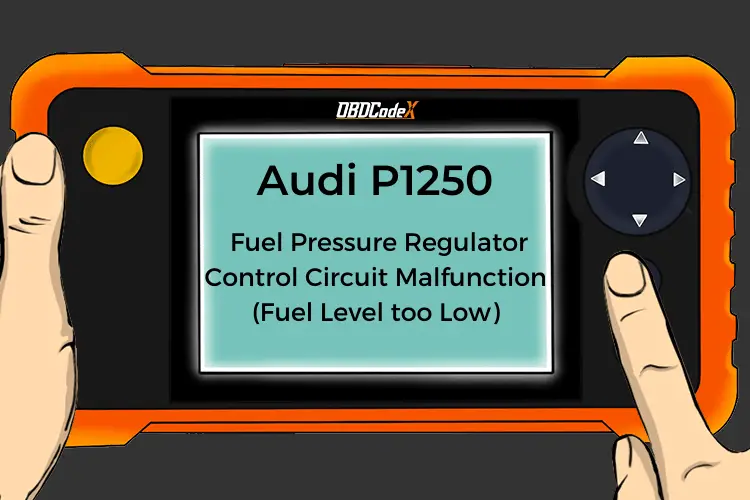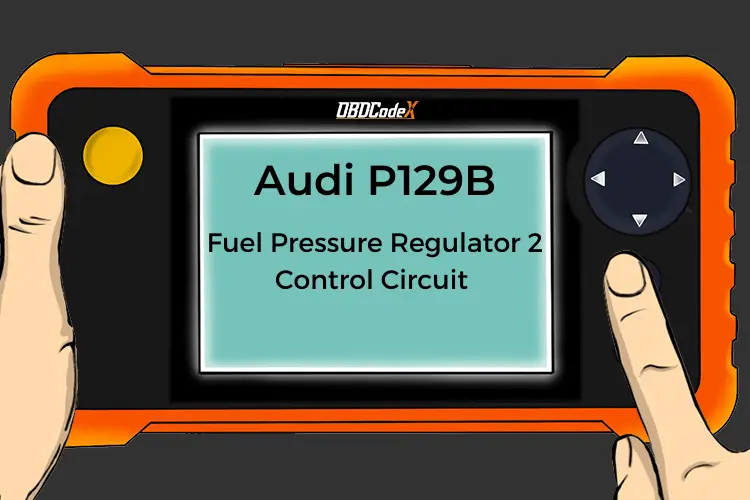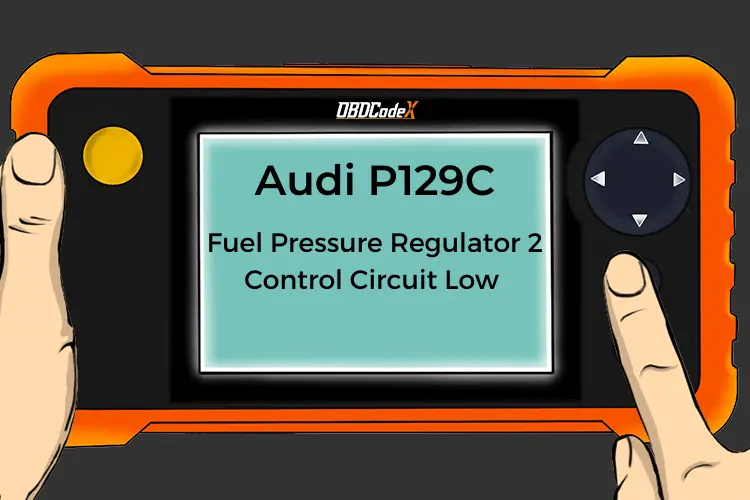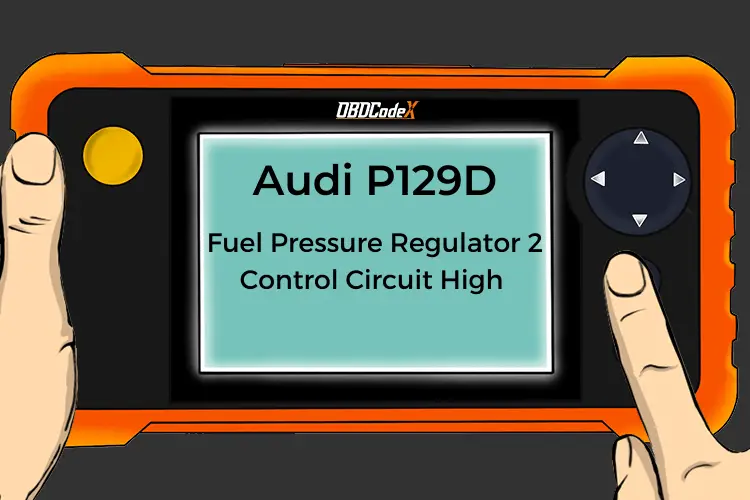P0091: Fuel Pressure Regulator 1 Control Circuit Low
Is your scanner showing P0091?
No worries. We'll show you what it means and how to deal with it.
P0091: Fuel Pressure Regulator 1 Control Circuit Low
OVERVIEWWhat Does The P0091 Code Mean?
When a code P0091 is stored, it means that the powertrain control module (PCM) has detected a low voltage signal from the control circuit of the electronic fuel pressure regulator designated 1. The numeral designation 1 is used in systems which have multiple electronic fuel pressure regulators. It may refer to a particular engine bank but not always.
Typically, the electronic fuel pressure regulator is controlled by the PCM. Battery voltage and ground signals are used to control a servo motor which positions the regulator valve so that the desired level of fuel pressure is achieved for any given situation.
The fuel pressure sensor is located in the fuel injector rail and allows the PCM to monitor fuel pressure so that it can adjust fuel pressure regulator voltage as necessary. As voltage is increased at the electronic fuel pressure regulator servo motor, the valve is opened and fuel pressure is increased. Decreased voltage at the servo causes it to retract and fuel pressure decreases.
Most often, the fuel pressure regulator and fuel pressure sensor are integrated into a single housing (with one electrical connector) but may be separate components.
If actual fuel pressure regulator control circuit voltage is less than a desired level, as calculated by the PCM, a P0091 will be stored and a malfunction indicator lamp (MIL) may be illuminated.
Related fuel pressure regulator engine codes:
- P0089 Fuel Pressure Regulator 1 Performance
- P0090 Fuel Pressure Regulator 1 Control Circuit
- P0092 Fuel Pressure Regulator 1 Control Circuit High
What Are The Symptoms Of The P0091 Code?
Symptoms of a P0091 code may include:
- Delayed startup when the engine is cool
- Black smoke from the exhaust system
- Diminished fuel efficiency
- Engine misfire codes and idle control codes may also accompany a P0091
What Are The Potential Causes Of The P0091 Code?
Potential causes for this code to set are:
- Shorted or open wiring and/or connectors in the fuel pressure regulator control circuit
- Defective fuel pressure regulator
- Faulty fuel rail pressure sensor
- Bad PCM or a PCM programming error
How Serious Is This P0091 Code?
Since excessive fuel pressure may lead to a variety of drivability issues and cause internal engine and catalytic converter damage, a code P0091 should be considered severe.
How Can You Fix The P0091 Code?
In order to diagnose a code P0091, a diagnostic scanner, a digital volt/ohmmeter (DVOM), a suitable fuel pressure gauge, and a reliable vehicle information source (such as All Data DIY) will be required.
NOTE: Extreme caution must be exercised when using a fuel pressure gauge. High pressure fuel contacting hot surfaces or open spark could ignite and cause a fire.
Step 1
I like to begin with a visual inspection of system wiring and connectors; focusing my attention on harnesses and connectors on top of the engine. The warm upper engine area makes it popular with pests in cold climates. These pests often gnaw system wiring and connectors.
Step 2
Connect the scanner to the vehicle diagnostic port and retrieve stored codes and freeze frame data. Write this information down as it will prove helpful if the diagnostic process drags on. Clear the codes and test-drive the vehicle if possible.
Should the code be immediately reset, check for the correct degree of voltage and a battery ground at the fuel pressure regulator. If voltage is not discovered, test power supply relays and fuses following the wiring diagram derived from the vehicle information source. If there is no ground, the wiring diagram can help to find the location of the fuel pressure regulator control system ground/s and make sure they are secure.
The presence of voltage and ground at the fuel pressure control regulator would prompt me to obtain fuel pressure specifications from the vehicle information source, then test fuel system pressure using the fuel pressure gauge. Always follow manufacturer’s recommendations for using the fuel pressure gauge. Use the scanner to observe fuel system data while visually monitoring manual fuel pressure with the fuel gauge.
Suspect a faulty fuel pressure sensor if the level of fuel pressure reflected on the scanner does not coincide with actual fuel pressure. Variations in fuel pressure regulator control voltage should mirror fluctuations in actual fuel pressure. If this does not occur, suspect that either the fuel pressure regulator is defective, there is an open or shorted circuit in one of the fuel pressure regulator control circuits, or that the PCM is bad.
Step 3
Use the DVOM and follow manufacturer’s recommendations for testing the electronic fuel pressure regulator and the individual fuel pressure regulator control circuits. To prevent damage to control modules, disconnect controllers from the circuit before testing circuit resistance and continuity with the DVOM.
Additional diagnostic notes:
- Fuel rail and related components may be under high pressure. Use caution when removing the fuel pressure sensor or fuel pressure regulator
- Fuel pressure testing should be done with the ignition switch in the key on engine off (KOEO) position
Other fuel pressure trouble codes include:
- P0087 Fuel Rail/System Pressure – Too Low
- P0088 Fuel Rail/System Pressure – Too High
- P0190 Fuel Rail Pressure Sensor A Circuit
- P0191 Fuel Rail Pressure Sensor A Circuit Range/Performance
- P0192 Fuel Rail Pressure Sensor A Circuit Low Input
- P0193 Fuel Rail Pressure Sensor A Circuit High Input
- P0194 Fuel Rail Pressure Sensor A Circuit Intermittent
Recommended Parts
Below are some recommended auto parts to help you address the trouble code affecting your vehicle and get it running smoothly again:
>>> KEEPTOP Diesel Fuel Pressure Regulator Solenoid Control Valve Metering Unit Suction
>>> FRP sensor
>>> ECU
>>> INNOVA 5210
>>> KAIWEETS Digital Multimeter
Note: During the purchasing process, please check carefully whether the part you want to buy fits your car!




